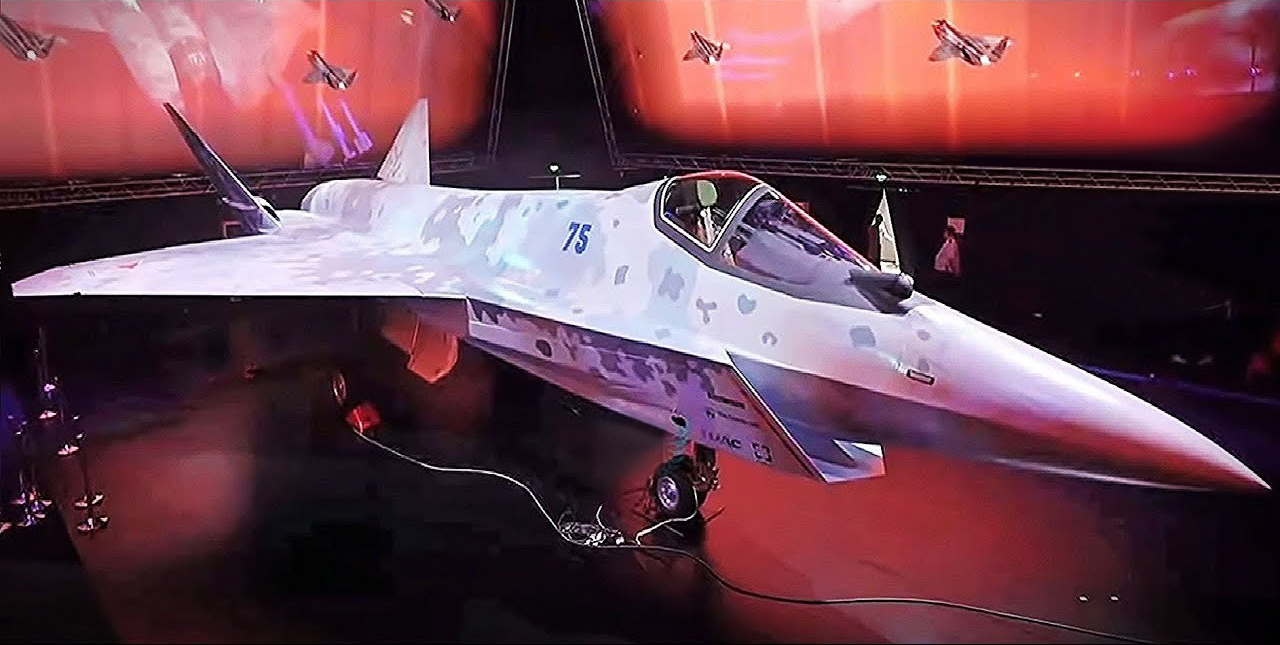Last month Russia took the aviation world by surprise when a new lightweight fifth-generation stealth fighter was unveiled at the MAKS-2021 air show in Moscow. The single-engine fighter aircraft Su-75, also named ‘Checkmate’ is expected to compete against the likes of US’ F-35. While borrowing several elements from the Su-57 twin-engine fighter, the selling point for ‘Checkmate’ will be its lower cost and the ability to accommodate customisations as per the customer’s requirements.
In a video released before the unveiling by the Russian state corporationRostec, India along with Vietnam, UAE, and Argentina were highlighted as potential buyers. Further, according to company officials, Checkmate would be primarily intended for export, especially to the Middle East, Southeast Asia, Latin America, and Africa. Sukhoi has claimed that the prototype will make its maiden flight in 2023 and deliveries are expected to start by 2026.
With a price tag of $25-30 million as flyaway cost (without customisations and weapons), Su-75 Checkmate is being advertised as the best option in the fifth-generation category, at low acquisition and sustainment costs. However according to experts, the proposed price tag is wildly optimistic as the experience of Su-57 has shown how the proposed costs can escalate during production.Beyond the price tag, the timelines for manufacturing and delivery are also being debated as experts are of opinion that deliveries by 2026 is too early to predict, considering the prototype is yet to make the test flight two years from now.
In other argument,Su-75 would be a hard sell without the aircraft having a program of record in Russia. But it has been debated that Russia can barely afford to finance the Su-57 project at present and without financing from foreign countries or advance orders, the production of Su-75 Checkmate can face several hurdles. According to United Aircraft Corporation’s (part of Rostec)chief executive Yuri Slyusar, Su-75 Checkmate is an industry-led initiative rather than a response to a specific Russian air force requirement. He expressed his confidence that Moscow will order several Su-75 for Russian forces. So, when and how many Su-75s will be ordered for the Russian forces remains to be seen.
In other argument,Su-75 would be a hard sell without the aircraft having a program of record in Russia. But it has been debated that Russia can barely afford to finance the Su-57 project at present and without financing from foreign countries or advance orders, the production of Su-75 Checkmate can face several hurdles. According to United Aircraft Corporation’s (part of Rostec)chief executive Yuri Slyusar, Su-75 Checkmate is an industry-led initiative rather than a response to a specific Russian air force requirement. He expressed his confidence that Moscow will order several Su-75 for Russian forces. So, when and how many Su-75s will be ordered for the Russian forces remains to be seen.
India has been interested in fifth generation aircraft capability since starting of last decade. In 2018, after years of collaboration with Russia for the Su-57, India pulled out from co-development as prices escalated and concerns surfaced from Indians side about the stealth and engine features of the aircraft. Today for India, price and timelines are not the only considerations which would be on table when discussion for a potential purchase of Su-75 Checkmate comes up. Several media houses in India have speculated that in the coming months, a discussion over India’s interest in a deal might happen. However, with India focusing on its indigenous fourth-generation light combat aircraft fighter ‘Tejas’ (expected to be inducted by 2028 in Indian forces), and AMCA – Advanced Medium Combat Aircraft (an Indian joint venture between DRDO, HAL and private company to develop a fifth-generation fighter aircraft for the Indian Air Force and the Indian navy by 2028), it will surely take some lucrative offer making by the Russians to lock India ina deal.
For other prospective buyers like Vietnam and Middle East the deal might be much more appealing. With Southeast Asian nations trying to counter dependence on China and Middle East doing the same in respect to US, Russian makers are eager to tap into the low-cost fighter aircraft market with their new offering. Considering US imposing CAATSA related sanctions on buyers of Russian defence equipment, tapping new sectors might prove to be a good way for Russian defence market to counter diversification plans in defence base by the traditional partners like Vietnam.
Regarding India, opinions are floating from different parts of the world. Whereas Chinese analysts believe that India may opt for Checkmate to deter China, western analysts have tried to remind how cost overruns and spare part availability issue has often troubled Indian forces in past when it comes to Russian aircrafts. In coming months, US’ response to India’s S-400 purchase will also come to light. The extent of sanctions imposed on India under the CAATSA (Countering America’s Adversaries Through Sanctions Act) will surely have an impact on future India-US and India-Russia defence relations. While strict sanctions might push India towards Russian defence offerings even more, a milder reaction might help US engage with India in near future in terms of offering its own defence systems which can compete with the Russian offerings.
If Su-75 is the offering India will take in serious consideration, it invariably will strengthen Indo-Russian relationship and increase India’s salience for Russian foreign policy. India’s official reaction is still awaited.

